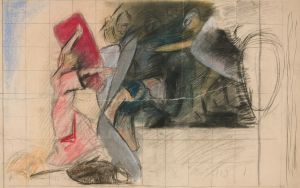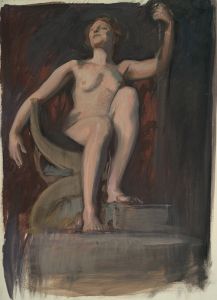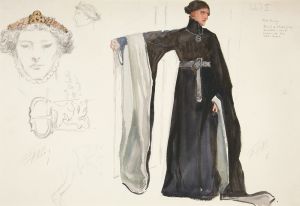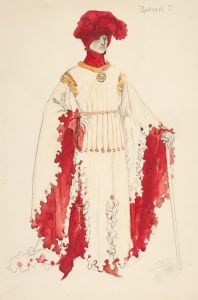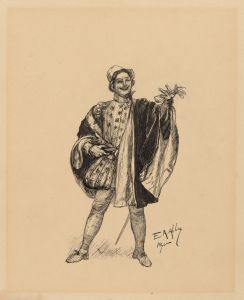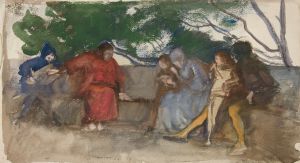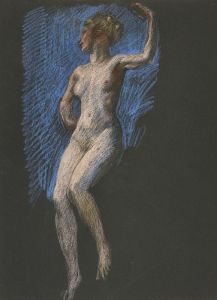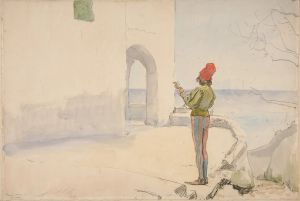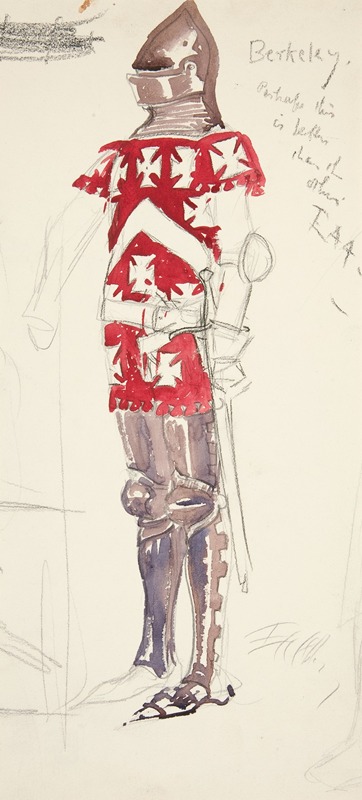
Berkeley, costume sketch for Henry Irving’s Planned Production of Richard II
A hand-painted replica of Edwin Austin Abbey’s masterpiece Berkeley, costume sketch for Henry Irving’s Planned Production of Richard II, meticulously crafted by professional artists to capture the true essence of the original. Each piece is created with museum-quality canvas and rare mineral pigments, carefully painted by experienced artists with delicate brushstrokes and rich, layered colors to perfectly recreate the texture of the original artwork. Unlike machine-printed reproductions, this hand-painted version brings the painting to life, infused with the artist’s emotions and skill in every stroke. Whether for personal collection or home decoration, it instantly elevates the artistic atmosphere of any space.
Edwin Austin Abbey was an American artist known for his illustrations and paintings, particularly those depicting Shakespearean subjects and historical themes. One of his notable works is the "Berkeley, costume sketch for Henry Irving’s Planned Production of Richard II." This artwork is a costume sketch created by Abbey in preparation for a theatrical production of William Shakespeare's play "Richard II," which was to be staged by the renowned English actor-manager Sir Henry Irving.
Edwin Austin Abbey was born on April 1, 1852, in Philadelphia, Pennsylvania. He began his career as an illustrator, working for magazines such as Harper's Weekly. Abbey moved to England in 1878, where he became deeply involved in the art and theater scene. His work was characterized by meticulous attention to detail and historical accuracy, which made him a sought-after artist for theatrical productions.
Henry Irving, born on February 6, 1838, in Keinton Mandeville, Somerset, was one of the most famous actors and theater managers of the Victorian era. He was the first actor to be awarded a knighthood, in 1895, and was known for his innovative productions of Shakespearean plays. Irving's Lyceum Theatre in London became a hub for high-quality theatrical performances, and he often collaborated with artists and designers to create visually stunning productions.
The play "Richard II" is one of Shakespeare's historical dramas, believed to have been written around 1595. It tells the story of King Richard II of England, focusing on his downfall and the political machinations that lead to his eventual deposition by Henry Bolingbroke, who becomes King Henry IV. The play explores themes of kingship, power, and identity, and is known for its lyrical language and complex characters.
Abbey's costume sketch for "Richard II" was part of the preparatory work for Irving's planned production. Costume sketches are an essential aspect of theatrical design, providing a visual representation of how characters will appear on stage. These sketches help directors, actors, and costume makers understand the aesthetic vision for the production and ensure historical and contextual accuracy.
Abbey's sketches were highly regarded for their historical precision and artistic quality. His work often involved extensive research into the period being depicted, ensuring that costumes were not only visually appealing but also authentic to the time. This attention to detail was particularly important for a play like "Richard II," where the historical setting plays a crucial role in the narrative.
While the specific details of Abbey's sketch for "Berkeley" in the production of "Richard II" are not widely documented, it can be inferred that the sketch would have reflected his commitment to historical accuracy and artistic excellence. Abbey's collaboration with Irving would have been a significant contribution to the visual and dramatic impact of the planned production.
Edwin Austin Abbey continued to work on various artistic projects until his death on August 1, 1911. His legacy includes a vast array of paintings, illustrations, and theatrical designs that continue to be celebrated for their beauty and historical fidelity. Abbey's work on costume sketches for productions like "Richard II" remains a testament to his skill and dedication as an artist.





